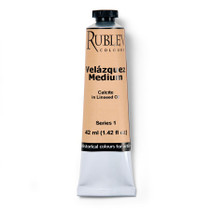Discover the finest pure rabbit skin glue, made in the U.S. from 100% natural rabbit collagen. This high-quality, fine mesh granular glue dissolves easily in water, making it an ideal choice for gesso preparation, woodworking, and traditional painting techniques. Known for its exceptional strength, viscosity, and elasticity, it outperforms many modern adhesives, providing superior adhesion and flexibility.
This light-colored and translucent glue is widely used in traditional woodworking, gilding, and distemper painting. It is water-soluble, allowing for easy reversibility and repositioning, making it a preferred adhesive in restoration work and fine arts applications.
Key Features:
✔️ Premium Grade & High Purity – Made from 100% pure rabbit collagen for superior strength and flexibility.
✔️ Versatile Uses – Ideal for gesso preparation, canvas sizing, woodworking, gilding, and traditional distemper paints.
✔️ Easy to Use – Dissolves easily in water and is applied warm for superior adhesion.
✔️ Reversible & Adjustable – Remains water-soluble for repositioning in woodworking and restoration applications.
✔️ Stronger than Most Adhesives – Offers higher strength, viscosity, and elasticity than bovine glue alternatives.
✔️ Traditional & Historic Use – Used by artists, furniture makers, and restorers for centuries.
✔️ Made in the USA – Ethically sourced and manufactured under strict quality standards.
Why Choose Our Rabbit Skin Glue?
?️ Perfect for Artists & Woodworkers – Whether you're preparing a gesso surface for painting, creating distemper paints, or working on fine woodworking projects, this glue ensures exceptional adhesion.
? Traditional Craftsmanship & Conservation – Used by restoration professionals and artists for centuries, it is the go-to adhesive for historical repairs, panel preparation, and gilding applications.
? Superior Adhesion & Strength – Unlike modern adhesives, rabbit skin glue gels as it cools, creating a flexible yet firm bond that enhances durability.
How to Use Rabbit Skin Glue
For Gesso & Canvas Sizing
1️⃣ Dissolve 40-70g of glue in 1 quart of water and let it soak for several hours or overnight.
2️⃣ Heat gently in a double boiler or glue pot (never exceeding 65°C / 150°F) until fully dissolved.
3️⃣ Apply a thin layer to canvas or wood using a brush and let dry for 24 hours.
For Distemper Paints
1️⃣ Soak 100g of glue in 1 liter of water and let it swell overnight.
2️⃣ Heat gently until fully dissolved.
3️⃣ Mix with dry pigments and apply in thin layers using a bristle brush.
For Woodworking & Restoration
1️⃣ Heat the glue to a smooth liquid consistency.
2️⃣ Apply to wood joints or surfaces while warm.
3️⃣ Allow to cool and gel before pressing pieces together.
FAQs
Is rabbit skin glue reversible?
Yes! It remains water-soluble, allowing for easy repositioning and restoration of artwork and wood projects.
Can this glue be used for gilding?
Absolutely! It is commonly used as a size in gilding and gold leaf applications.
What is the best ratio for making traditional gesso?
For best results, use 60-100g per quart of water when preparing gesso for canvas or panel priming.
How long does it take to dry?
A single thin layer dries in approximately 24 hours, depending on humidity and temperature.
What makes this glue better than modern adhesives?
Rabbit skin glue gels at lower temperatures, is reversible, and provides superior adhesion in fine arts and woodworking applications.












